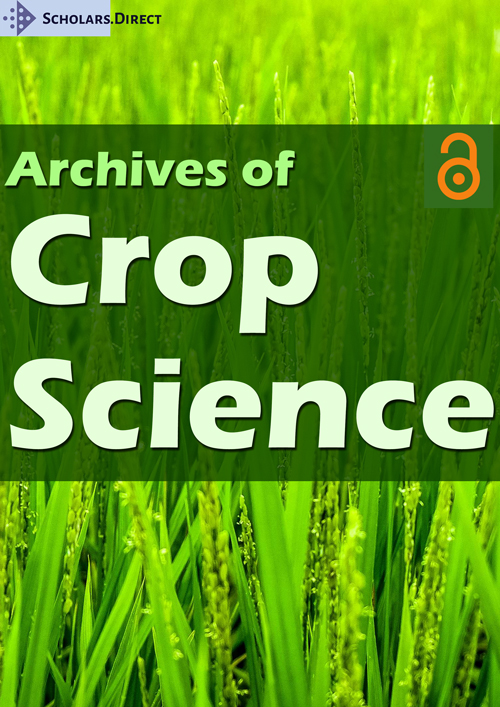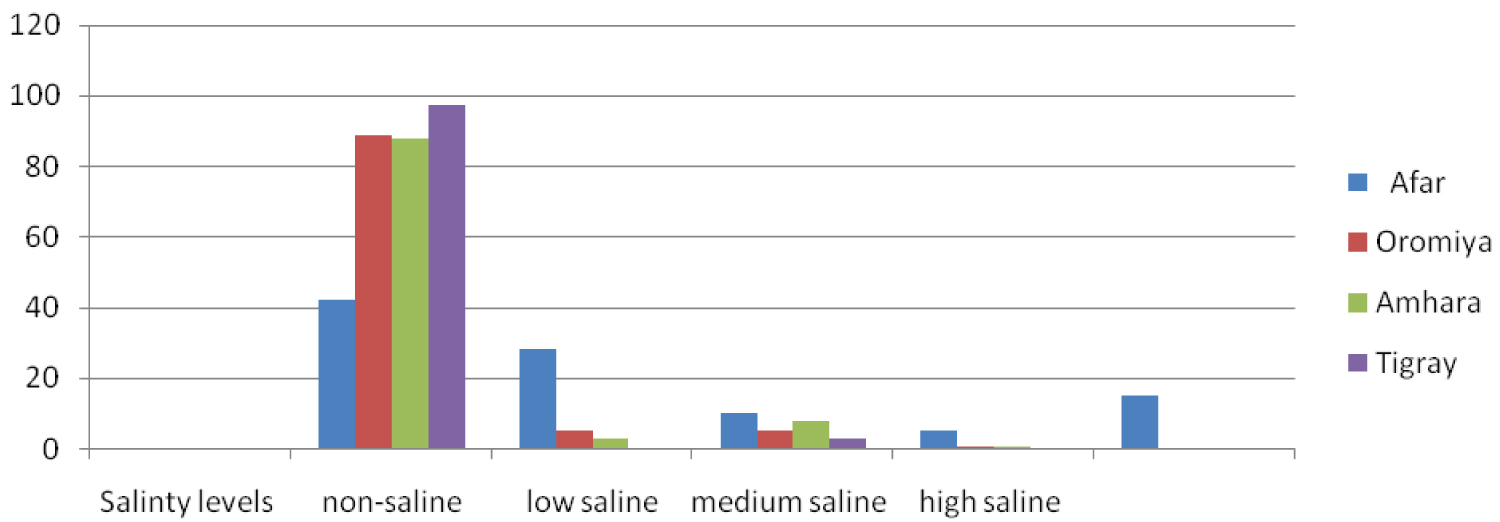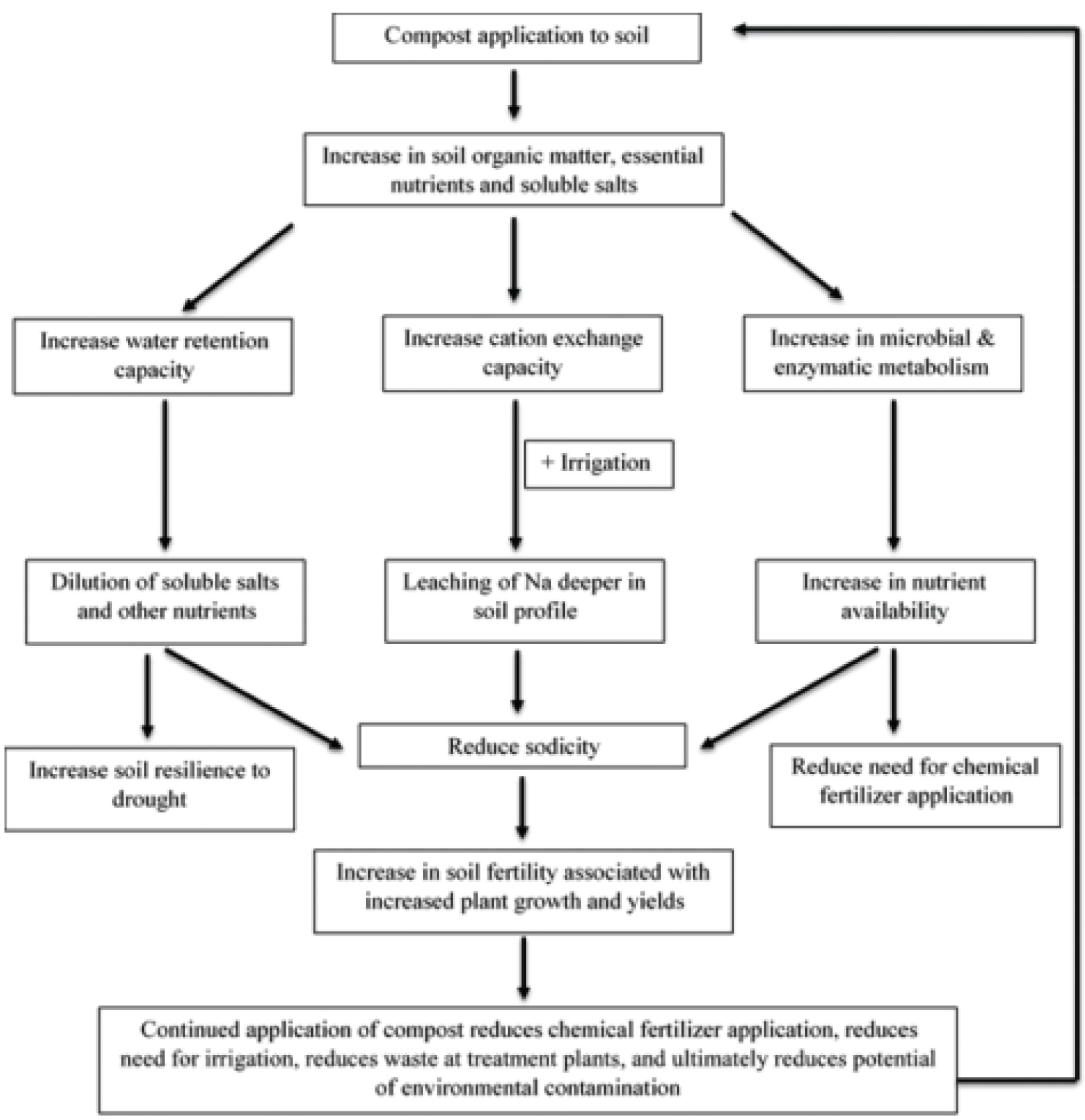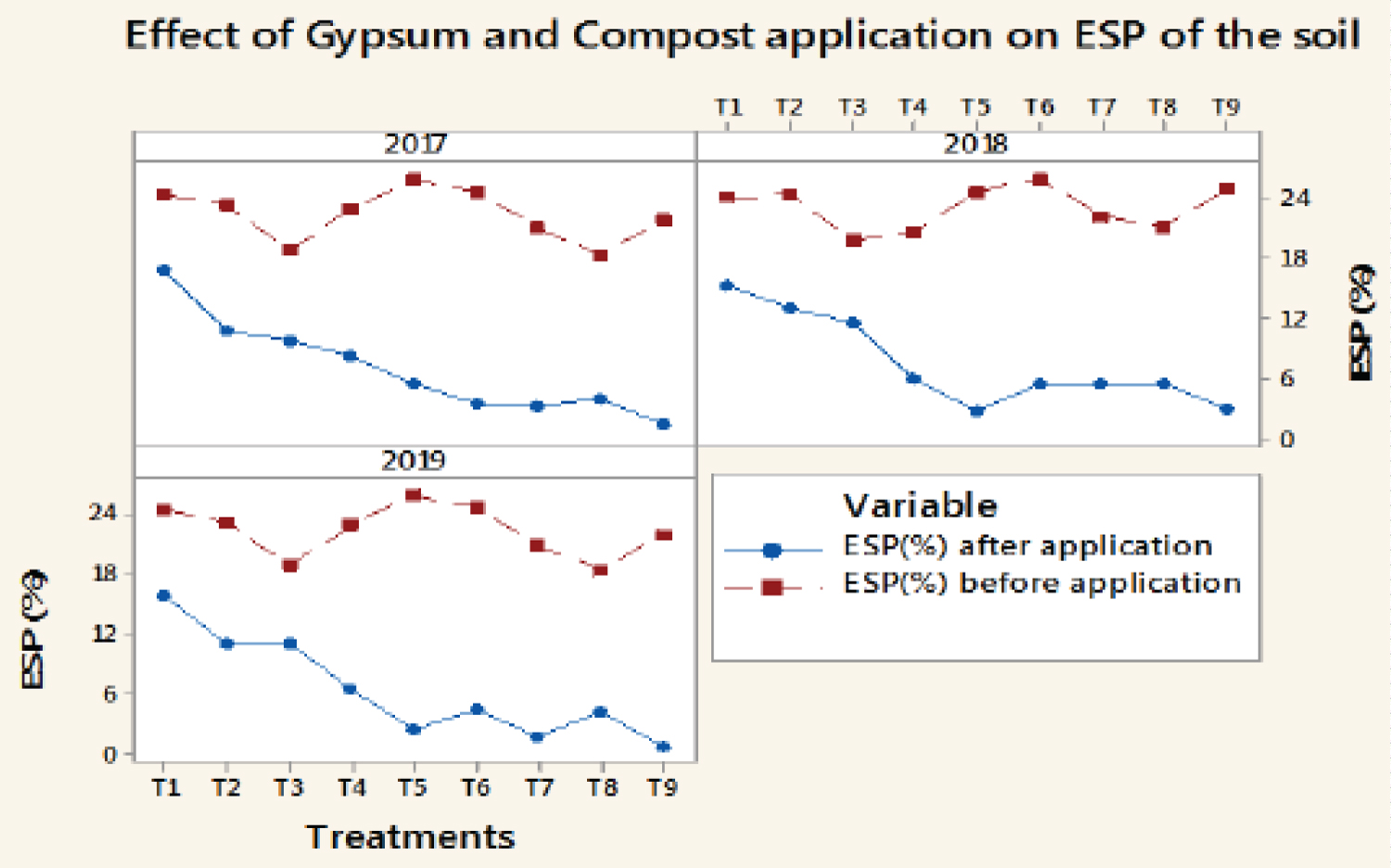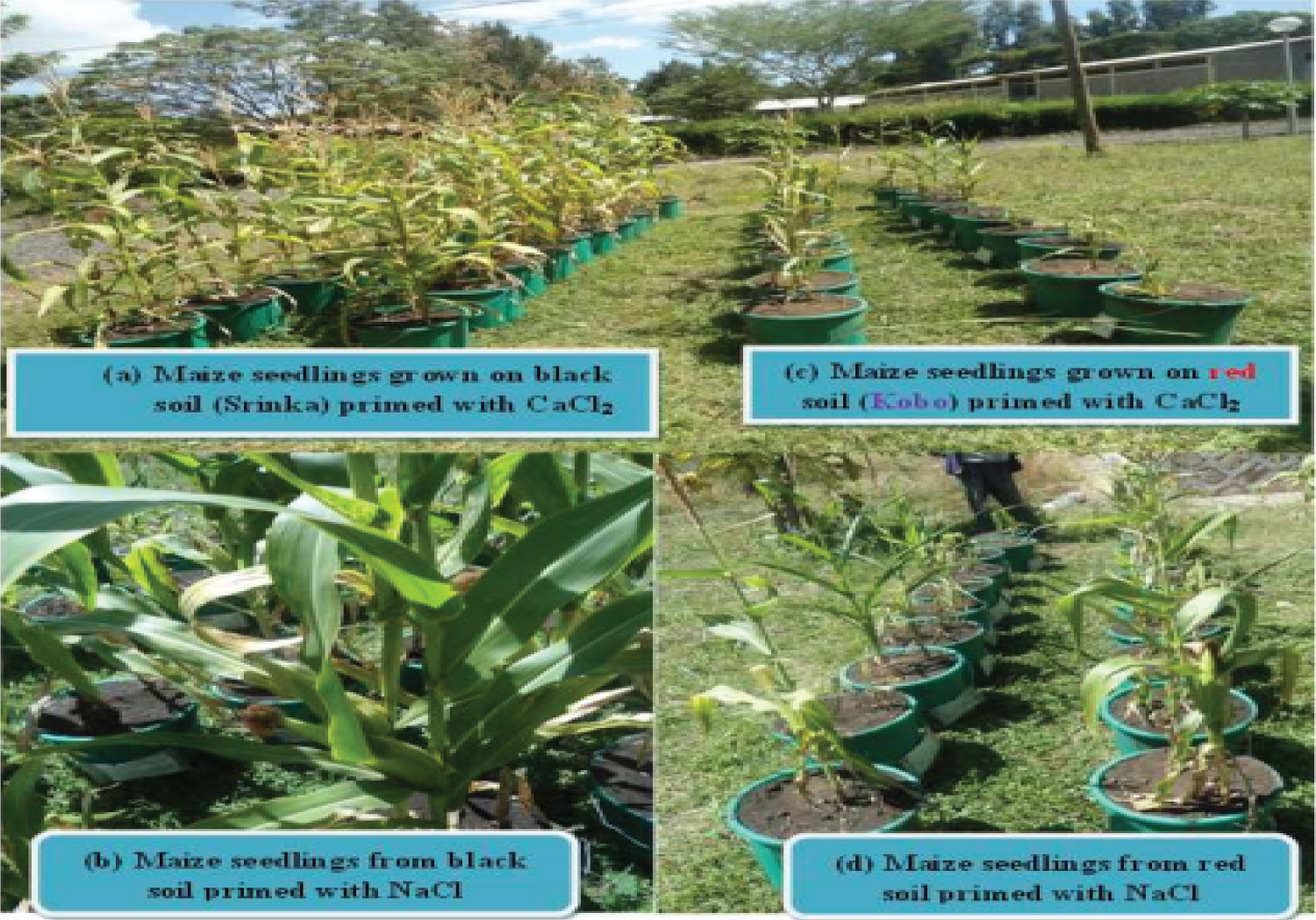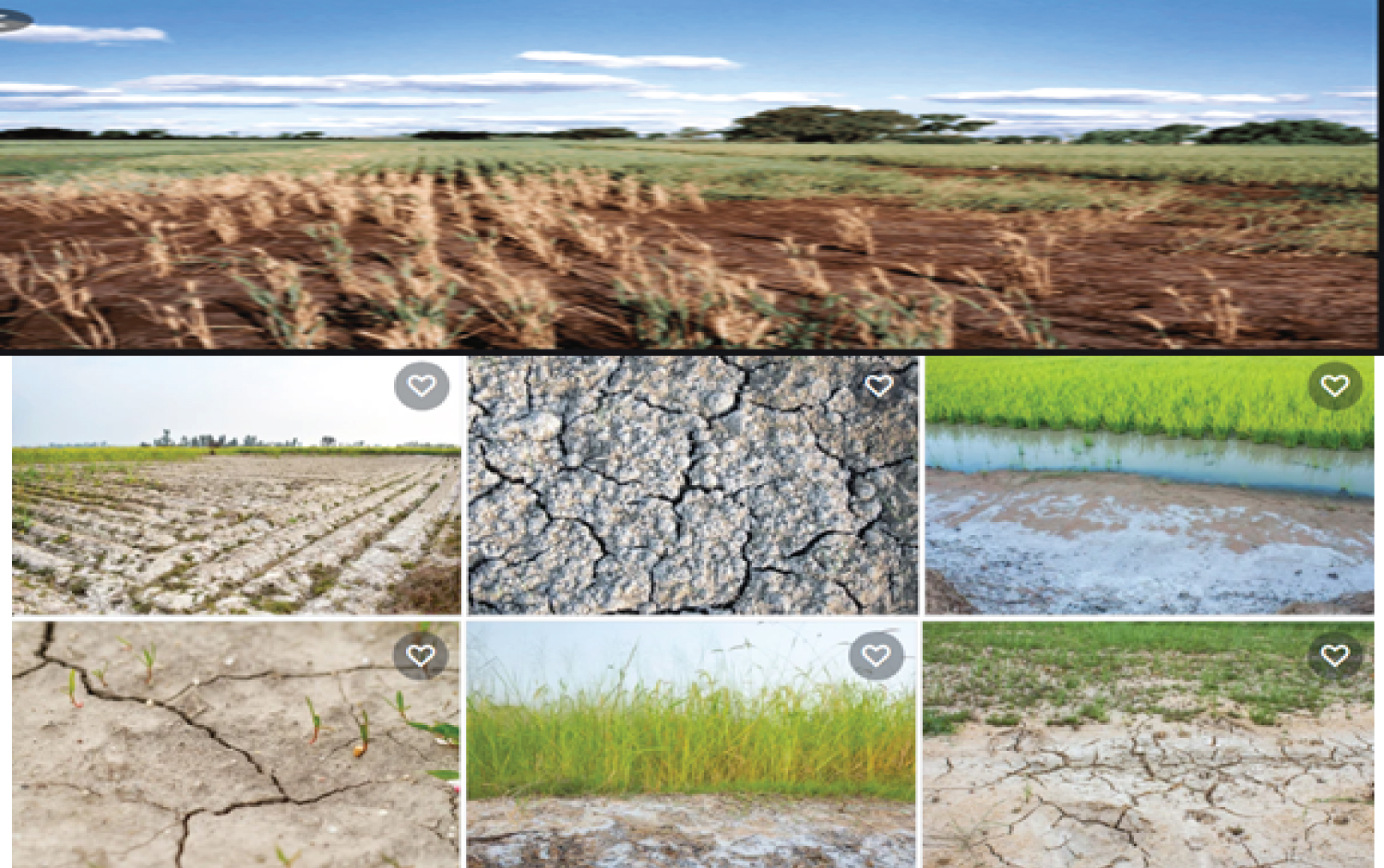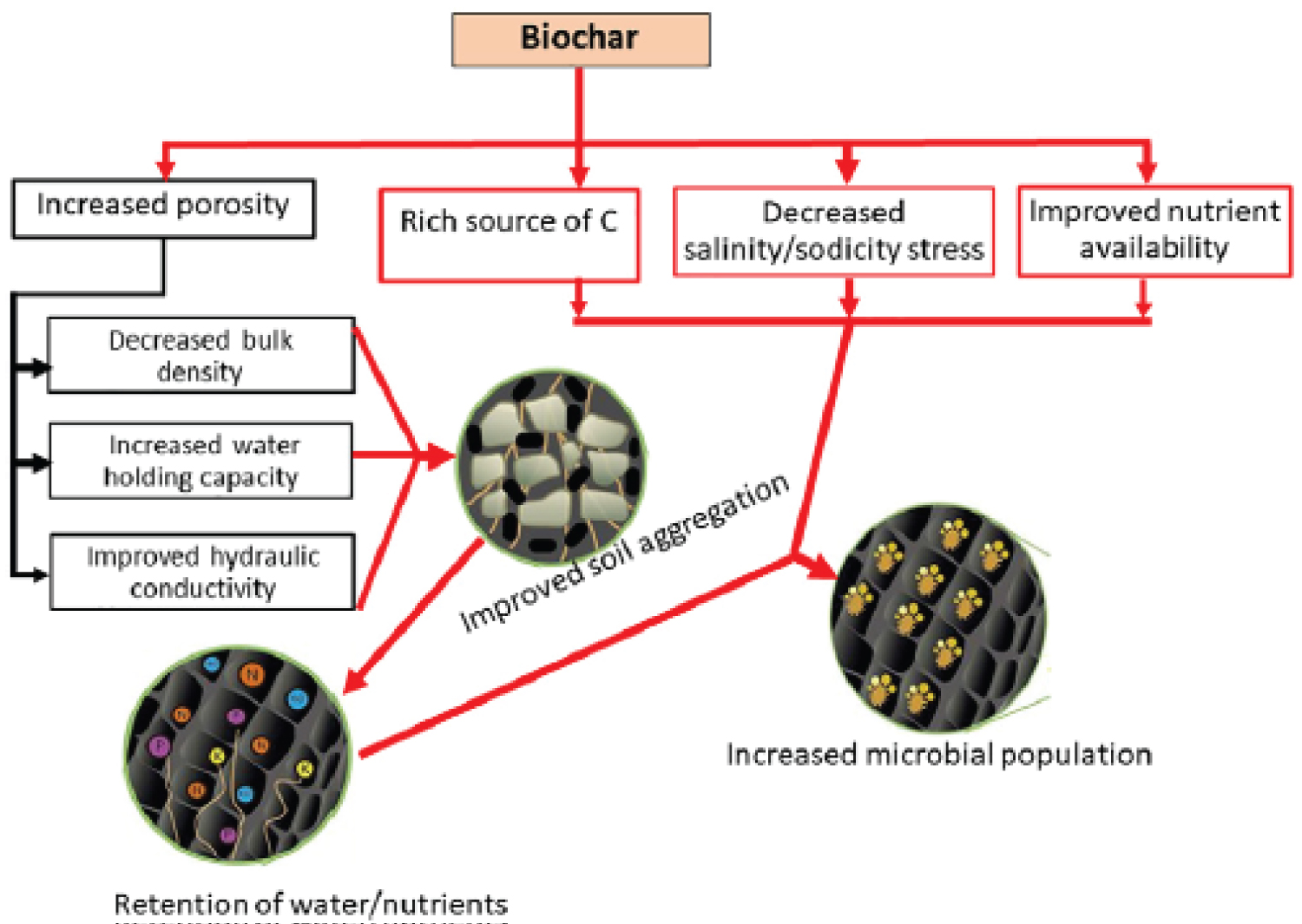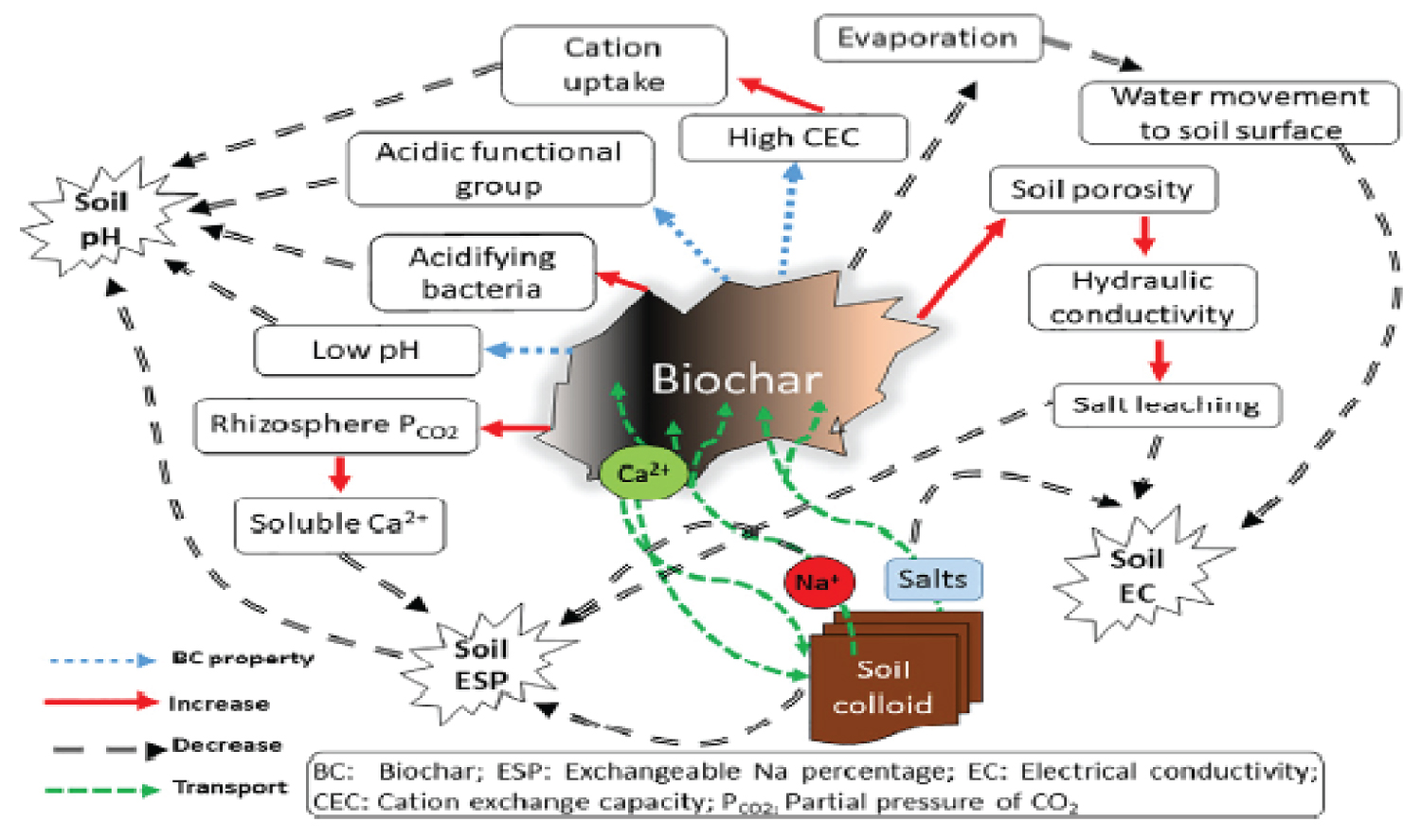Review on Causes and Management Strategies of Salt Affected Soils in Lowlands of Ethiopia
Abstract
Soil salinization is one of the major constraints in achieving food security and environmental degradation in Ethiopia. Restoration of salt-affected lands into productive lands and protection of newly developed areas from the spread of salinity is therefore of paramount importance. In high salinity areas where technical solutions to soil rehabilitation are expensive and time consuming and growth of normal field crops is restricted, use of bioremediation methods including planting halophytic forages could bring these soils back into production. Furthermore, soil salinity is one of the primary reasons obstructing and preventing lucrative and sustainable agricultural productivity in many African countries as well as many other regions of the world. Soil degradation, which can be caused by salinity and sodicity, is considered as an environmental problem with severe adverse effects on agricultural productivity, particularly in arid and semiarid region. The main goal of the seminar is to highlight the problems of salt affected soils to agricultural production in Ethiopia's lowlands, as well as management strategies for alleviating soil salinity and increasing crop output. Soil salinity affects over half of Ethiopia's arable land. Strong saline soils cover more than half of the arable land affected by salt affected soils. Researchers discovered two primary reasons that limit saline soil fertility: the presence of phytotoxicity substances and nutrient shortage. Numerous strategic salt affected management plans have been created to address these issues in the country's lowlands. Several studies have been undertaken on soil management, which influences the physiochemical qualities of the soil and crop productivity in various ways. This paper synthesizes the available information on the causes, extent, and effects of salt-affected soils on crop production, reclamation and management approaches for tackling salinity and sodicity problems. The management approaches (e.g., the addition of amendments, plantation of salt-tolerant crops, appropriate irrigation and drainage management, phytoremediation, and bioremediation) have successfully tackled soil salinity and sodicity problems in many parts of the world. These approaches have further improved the socioeconomic conditions of farming communities in salt-affected areas. The paper also discusses the effectiveness of these mitigation strategies under Ethiopian conditions. The policy interventions for reclamation of soil salinity and sodicity that indicates future research attention to restoring agricultural sustainability are also foci of this paper Many findings suggested that gypsum, compost and bio-char improved soil physiochemical parameters such as soil texture, pH, accessible P, micronutrient, organic carbon, exchangeable sodium percentage (ESP) and crop yield and productivity.
Keywords
Lowland, Gypsum, Physiochemical properties, Soil salinity, Irrigation
Abbreviations
EC: Electric Conductivity; ESP: Exchangeable Sodium Percentage; FAO: Food and Agricultural Organization; GDP: Gross Domestic Product; PH: Power of Hydrogen; SAR: Sodium Adrosption Ratio; SAS: Salt Affected Soils; USSLS: United State Salinity Laboratory Staff
Introduction
Ethiopia is heavily reliant on agriculture sector for its overall economic growth and social sector development because it accounts for 40% of the GDP, 80% of the total employment and 70% of the export earnings [1]. The development of agriculture sector over the last decade has brought food self-sufficiency in the country with grain production reaching up to 27 million tons. This was the result of a strong commitment by the government, which allocated more than 15% of the total budget and introduced effective policies and programs for the development of agriculture sector [2]. The semi-arid and dry sub-humid agro-ecological zones of the country, which account for nearly 47% of the country's 113 million hectare, are marginal environments for crop production and are highly vulnerable to droughts and a significant proportion of population continues to rely on food aid and safety net programs [3]. Major causes of low agricultural productivity in these are declining soil fertility and increasing soil salinity, lack of improved crop varieties and lack of irrigation water.
The depletion rate for the major plant nutrients is estimated to be 40, 6.6 and 33.2 kgha-1 year-1 for N, P and k, respectively [4]. Other problems related to lower agricultural productivity are limited choice of crop varieties that are tolerant to soil salinity and water stress [5]. Soil degradation, which can be caused by salinity and sodicity, is considered as an environmental problem with severe adverse effects on agricultural productivity, particularly in arid and semiarid regions [6]. It is considered the most critical environmental stress which can negatively affect plant growth and the metabolism process [7]. Salinity usually appears in the arid and semi-arid areas where the evaporation process is higher than the total precipitation [8]. It was reported that groundwater is a permanent source of soil salinzation that causes poor productivity in the irrigated areas Moukhtar, et al. [9]. In Ethiopia, it was reported that, there are over 11 million hectares of unproductive naturally salt affected wastelands [10]. It is the major problems in irrigated areas of arid and semi-arid region where there is a high evapotranspiration rate in relation to precipitation [10]. This study also revealed that about 44 million ha (36% of the country's total land areas) are potentially susceptible to salinity problems. The soluble salts that occur in salt-affected soils consist mostly of various proportions Na+,Ca2+, Mg2+, Cl-, SO42-, HCO3- and occasionally K+ , CO32- and NO3- ions with minor quantities of boron , fluorine and lithium that are seldom of major importance because of their toxicity to plants [11]. These ionic constituents of salt-affected soils are released and made soluble from rocks and weather able minerals during the processes of geochemical and pedochemical weathering.
Four main sources of the constituents of soil salinity and sodicity {Na+ , Ca2+, Mg2+, K+ (common metals) and SO42-, Cl-, HCO3-, NO3- (common ligands)} are (a) mineral weathering (Na rich feldspars), (b) precipitation or rainfall, (c) fossil salts (marine or lacustrine deposits) and (d) collection of saline sediments in catchment areas [12,13]. Salts may also be introduced in irrigation water, or because of fertilization. Depending on the climatic conditions, the accumulated soluble salts may adequately be leached out of the profile in humid environments. However, in arid environments where evapotranspiration exceeds rainfall during some periods of the year, removal of salts through rainfall is very low compared with the rate of their removal by irrigation water [14]. Therefore, the processes of secondary salinization in arid and semi-arid climatic regions are the consequences of quite diverse and interacting factors of surface and ground waters, soil physical properties, climate, relief and geomorphology, biological activities, and human interference.
Several researchers have reported the widespread occurrence of soil and water salinity and sodicity in the lowland irrigated areas of Ethiopia [15]. Ethiopia's total land area affected by salinity is 11,033,000 ha, and it is ranked first in Africa [16]. Following Ethiopia are Chad, Egypt, and Nigeria, having a total area of 8,267,000, 7,360,000, and 6,502,000 ha of salt-affected lands, respectively [16]. The development of large-scale irrigation projects in Rift valley in the absence of proper drainage systems for salinity control has resulted in increasing severity and rapid expansion of soil salinity and sodicity problems leading to complete loss of land for crop cultivation in these areas. Despite this alarming situation, attempts to resolve land degradation problems could not get due attention.
With a 3% average population growth, future food security as well as the livelihood source for a considerable portion of the population remains a challenge to the governments. The soil salinity problems in Ethiopia stems from use of poor quality water coupled with the intensive use of soils for irrigation, poor on-farm water management practices and lack of adequate drainage facilities [17]. Restoration of salt-affected lands into productive lands and protection of newly developed areas from the spread of salinity through improved irrigation and crop management is therefore of paramount importance. In the high salinity areas where growth of normal field crops is restricted, use of bioremediation methods including planting halophytic forages could bring these soils back into production.
Methodology of Review
To ensure the success of this work, many sources such as journals, conferences, thesis works, and reports on the causes, extent, and impact of salt affected soils in Ethiopia, as well as its influence on crop production and management techniques, were used.
Classes Salt of Affected Soils
All soils contain some salts but, some soils contain excessive concentrations of either soluble salts or exchangeable sodium or both that require special remedial measures and management practice that are not held on soil exchangeable sites or exchangeable Na or both [18]. The three main types of salt-affected soils are saline, sodic and saline-sodic [19,20]. These classes are based on general electrical conductivity (ECe), exchangeable sodium percentage (ESP), pHe and sodium adsorption ratio (SAR) guidelines as saline, sodic and saline-sodic soils [18] (Table 1).
Saline soils
Saline soil means soils with excessive soluble salts that retards seed germination and plant growth [22,23]. These soluble salts exist in soil as cations and anions. Cations include calcium (Ca++), magnesium (Mg++) and sodium (Na+), while anions include chloride (Cl-), and sulfate (SO4-2) ions. Mostly occurring salts in saline soils are sulfates and chlorides of calcium and magnesium. Small quantities of cations potassium K+) and (NH4+) and the anions bicarbonate (HCO3-), nitrate (NO3-) and carbonates (CO3-2) are also present [24,25]. In saline soils soluble salts are in excess while exchangeable sodium is present in small concentration thus having good physical properties, flocculated soil structure and high permeability like in normal soils [26].
Saline-sodic soils
Saline sodic soils are containing both excessive quantities of soluble salts and exchangeable Na and interfere with the growth and production of most crop plants [18]. Unlike sodic soils, saline sodic soils are well-structured and permeable soils and its properties are much like those of saline soils [18,27]. These soils form as a result of the combined processes of salinization and alkalization. Saline-sodic soils have some different properties from both saline and sodic soils [27]. If attempts are made to leach out the soluble salts of saline-sodic soils with good quality irrigation water, the exchangeable Na levels and also pH would increase and, therefore, the soil would change to adverse characteristics of sodic soils. Therefore, attention must first be given to reducing the levels of exchangeable Na and then to the problem of excess soluble salts [8].
Sodic soils
Sodic soils are low in soluble salts than saline or saline sodic soils but high in exchangeable Na [28,29]. The soil solution of sodic soils, although relatively low in soluble salts, has a composition that differs considerably from that of normal and saline soils. These soils contain HCO3- and CO32- as the dominant anions [30]. At high pH readings and in the presence of carbonate ions, Ca2+ and Mg2+ are precipitated. Hence, the soil solutions of sodic soils usually contain only small amounts of Ca2+ and Mg2+ but high amount of Na+ [31]. In addition, when the plants extract the water from the soil; the salts remain and become concentrated. This concentration causes the calcium to precipitate as calcium carbonate, while much of the Na remains in the soil water [32].
Extent and Distribution of Salt Affected Soils in Ethiopia
Ethiopia stands 9th in terms of total land and 7th in percent of the total salt-affected area among the various countries in the world. Despite the widespread existence of salt affected soils, no accurate data and information is available on their extent, distribution, exact geographical location, sources, causes, and properties. However, many of these soils are concentrated in the plain lands of the lowland regions (Afar, Oromia and Amhara), Rift Valley System, the Denakil Plains, Wabi Shebelle River Basin, and various other lowlands and valley bottoms throughout the country [33,15]. Recently, salt-affected irrigated farmlands of four regions (Afar, Oromia, Amhara, and Tigray) of Ethiopia have been mapped using remote-sensing and soil data and the results are presented in (Figure 1) and (Table 2) [13].
The total land covered by salt-affected soils in the former Hararghe Administrative Region alone is estimated to be 1,159,300 ha, which is about 12.9% of the arable land area in the Region [33]. In Amibara irrigated area (14,787.58 ha), 70% of the soils are Fluvisols and the rest 30% are Vertisols, with a coverage of about 33.20% and 8.76% of the total salt affected area, respectively [34]. Furthermore, reports have also indicated that 39% of the Abaya State Farm was salt affected [35]. The baseline survey results revealed that there are 119 and 10,000 ha of salinity and sodicity soils in the Tigray and Southern Nations, Nationalities, and the People Regional States, respectively [33]. In Ethiopia, about 44 million ha (36% of the total land area) is potentially susceptible to salinity problems of which 11 million ha have already been affected by different levels of salinity and mainly concentrated in the Rift valley. Gypsum is considered a low-cost source and one of the most effective amendments for salt problematic soils including those affected by general salinity, high Na (sodic or solonetzic), and soil compaction. The addition of gypsum (PG) improves the soil chemical and physical properties due to its high content of calcium (Ca2+), P and sulphur (S), as well as decrease soil pH values.
In Ethiopia, approximately 11 million ha are salt affected soils [36]. Despite the wide spread occurrence of salt affected soils in the country, there is not an accurate cadastral on their extent, distribution and exact geographical location as well as their sources, causes, properties and management practices. However, saline soils cover a greater extent of land in the Ogaden lowlands, the northern part of the Rift Valley (Awash River Basin), the Danakil plains and depressions, the central part of the Rift Valley (Zeway, Shala and Abaya lakes areas), the southern and extreme southern part of Rift Valley, the Omo River Basin, and Lakes Turkana and the Chew Bahir areas. Moreover, small areas of saline soils are known to occur along many river basins such as the Blate and the Setit River basins in the southern and northwestern part of the country, respectively. Spots of saline soils in small permanent or seasonal river valleys found in the drier part of the country are common phenomenon [37].
Sources and causes of salinity
The main sources and/or causes of salinity are shallow groundwater tables and natural saline seeps. Poor drainage and lack of appropriate irrigation water management is also known to facilitate secondary salinization [38]. Improperly planned irrigation projects not supported by improved irrigation and drainage management technologies had invited serious degradation causing salinity and sodicity problems in the Awash basin which accounts for about one third of total irrigated area of the country [39]. This high salinity problem is also related to uncontrolled irrigation practice and lack of knowledge on crop-water requirements and water management leading to increased saline groundwater level or capillary rise [40]. Discharge to the groundwater by surplus irrigation water has caused a rise in the water Table (0.5 m/year) in Middle Awash irrigated field and problems with secondary salinity in surface and sub- surface soil horizons [39,41]. Another source of salinity for rivers and other sources of irrigation water are attributed to salts of marine origin. During the rainy season, water quality of River Wabishebele for irrigation deteriorates as a result of very high flooding which dissolves soluble salts from loose marine origin along its course [42]. Climate is also a key factor in the salinization process. The high temperature of the Middle Awash (annual average 26.7 C) and low annual rainfall (500 mm) and the high free evaporation of water have aggravated the salinization process [39].
Management Strategies salt affected soils
Compost
Compost is a product produced through controlled aerobic, biological decomposition of organic materials. The product undergoes microbial action at both mesophilic and ther mophilic temperatures, which significantly reduces the viability of pathogens [43]. Compost has a wide range of chemical characteristics that include nutrient composition, pH, and bulk density, that are a result of the composting method applied and the composition and origin of the biodegradable materials used [44-46]. Traditionally, compost was comprised of waste plant material. More recent composting operations, however, include agricultural waste, yard waste, source-separate food waste, municipal organic waste, bio-solids, and even human or animal manures [47-49].
These wastes are being produced at increasing rates and their potential to pollute the air, water, and soil highlight the need to dispose of or utilize them in an environmentally friendly fashion [50,51]. Incorporating these organic wastes into compost allows composters to recycle and reuse elements with agronomic value that would otherwise end up in landfills and be of no reuse value. Recycling of these organic wastes and the production of compost reduces dependency on finite resources and promotes sustainable agricultural practices [47,52]. The primary nutrients within compost are forms of N, P, and K. Plants assimilate nitrogen in the form of nitrate (NO3-) and ammonium (NH4) and these nutrients can be interconverted from the various forms of nitrogen present within compost or fertilizer. Orthophosphate (H2PO4) is the most available form of P for plant absorption in soils, and potassium oxide (K2O) for K [53,54]. In addition to these primary nutrients, salts, micro- and macro-nutrients, heavy metals, and other contaminants may also be present within composts. Application of compost can alter the physical and chemical properties of soils which enhance the soil's ability to promote vegetative growth [55,56]. Although compost typically possesses many beneficial plant nutrients, it is not considered a fertilizer because of the high variability (nonuniformity) of nutrients throughout the various compost products (United States Composting Council) and Test methods and parameters. Despite the documented benefits of applying compost for plant growth, some compost use has been met with skepticism due to its possible high salt concentration. There is a misunderstanding that the application of composts with high concentrations of soluble salts can lead to reduced soil quality and plant growth. Regions that are experiencing escalating problems with soil salinity (e.g. salinization) and sodicity may be reluctant to apply compost to their fields because of the phytotoxicity associated with particular soluble salts such Na and Cl [55] (Figure 2) (Table 3).
Gypsum
(Table 4, Table 5 and Table 6) (Figure 3, Figure 4 and Figure 5).
Bio-char
Bio-char (solid carbonaceous residue, produced under oxygen-free or oxygen-limited conditions at temperatures ranging from 300 to 1000°C) has attracted considerable attention as a soil amendment [61], with carbon-residence time varying from tens of years to millennia [62]. An emerging pool of knowledge shows that bio-char addition is effective in improving physical, chemical and biological properties of salt-affected soils [63]. However, some studies have also found an increase in salinity and/or sodicity with bio-char application at high rates [64]. Further, the high cost associated with production of bio-char, transport and high application rates remains a significant challenge to its widespread use in areas affected by salinity and sodicity [65]. Nevertheless, recent advances in our understanding of bio-char warrant an evaluation of the relationship between bio-char properties and its impact on the properties of salt affected soils and plant growth. The main objective of the present paper was to review, analyze and discuss the recent studies investigating the role of bio-char in improving soil properties and enhancing plant growth in salt-affected soils. Further, this review emphasizes sustainable and profitable use of salt-affected soils by using bio-char as an organic amendment on such degraded lands (Figure 6 and Figure 7).
Salt-Tolerant Plants
In areas in which leaching salts with water is not feasible or economical, planting crops or forages that are able to grow under low to moderate saline conditions may be an economically viable option. As previously discussed, any increase in soil salinity is at the expense of plant health; however, some plants are better able to tolerate salinity than others. Salt tolerance is not an exact value, but rather depends upon many factors, such as salt type, climate, soil conditions, and plant age. Table 4 shows a qualitative value of salt tolerance for common crops and forages grown in Montana. In general, perennial plants, especially some grass forages, possess the highest tolerance to salts, while legumes are typically the most sensitive to salts. In using (Table 4), it is important to note that although plants listed as tolerant can tolerate a higher EC than those listed as sensitive, plant health and yields, regardless of tolerance, will likely be reduced with increased salinity. For example, a study by the Bridger Plant Materials Center (2001) (Table 7).
Leaching
Leaching excess salts and maintaining a favorable salt balance remains the best strategy to prevent detrimental salt accumulation in the soil profile. This is achieved by supplying enough water to leach salts below the root zone but not into groundwater reserves.
Drainage
There must be drainage to reclaim a sodic, saline, or saline-sodic soil. Drainage is the unimpeded downward movement of water beyond the crop root zone. It is the ability to move water through and out of the root zone. Hardpans, bedrock, and shallow water tables impede drainage. Signs of poor drainage include surface ponding, slow infiltration, or a soil that remains wet for prolonged periods of time. If drainage is impeded by a shallow water table or bedrock, artificial drainage must be installed or another use for the land might need to be considered.
The Irrigation Method
The irrigation method and volume of water applied have a pronounced influence on salt accumulation and distribution. Flood irrigation and an appropriate leaching fraction generally move salts below the root zone. Similar results can be obtained with a properly managed sprinkler irrigation system. With furrow and pressurized irrigation, soluble salts in the soil move with the wetting front, concentrating at its termination or at its convergence with another wetting front. In drip-irrigated plots, water moves away from the emitter and salts concentrate where the water evaporates. In furrow-irrigated plots, water movement is from the furrow into the bed via capillary flow. When adjacent furrows are irrigated, salts concentrate at the center of the intervening bed. Manipulating bed shape and planting arrangement are strategies often used to avoid salt damage in furrow-irrigated row crops.
Fertilizer Management
Many fertilizers contain soluble salts in high concentrations. Therefore, the nutrient source, rate, timing, and placement are important considerations in the production of horticultural crops. Salt indices for most commercial fertilizer products have been reported. For example, KCl has a salt index 205 times that of K2SO4. Generally, band application of fertilizers with high salt indices near seedlings should be avoided. The salt content of other things added to the soil, such as gypsum and manures, also should beconsidered. Applying gypsum is a useful management practice for precluding sodium accumulation on the soil's exchange complex, maintaining soil structure and improving water infiltration. For salt-sensitive crops such as lettuce, apply gypsum well before sowing so that soluble salts released during dissolution do not negatively affect production.
Soil amendments and water treatments
Soil amendments and water treatments often offer a practical and economical means for managing many problems common to saline and sodic soils. Soil applications of amendments are used for initial reclamation and long-term maintenance of soil quality. In general, water applications are intended to alter the chemistry of irrigation water such that no further degradation in soil quality will occur. Rates of amendments used for soil application are typically large and primarily based on economics. For water treatments, rates of amendments are typically much smaller and are nearly always based on solubility. Amendments such as gypsum and elemental S have been used for years. Gypsum is primarily used on Na-affected soils as a source of Ca++ ions to displace Na+ ions, which tend to disperse soil particles and restrict water infiltration. The resulting displaced Na+ ions are leached readily from the soil profile. Gypsum is a neutral salt that does not directly reduce pH. However, it can indirectly lower the pH of sodic soils by reducing the hydrolysis reactions associated with Na+ ions on the exchange complex.
References
- Outlook AE (2015) Regional development and spatial inclusion. African economic outlook.org.
- Yohannes DF, Ritsema CJ, Solomon H, et al. (2017) Irrigation water management: Farmers' practices, perceptions and adaptations at Gumselassa irrigation scheme, North Ethiopia. Agricultural Water Management 19: 16-28.
- Mekonen A (2007) Cost of land degradation in Ethiopia: A critical Review of past studies. EFD/World Bank report.
- Stoorvogel JJ, Smaling EMA (1990) Assessment of soil nutrient depletion in Sub-Saharan Africa: 1983-2000. 1: Main report (No. 28). SC-DLO.
- Kidane G (1999) Agronomic Technologies recommended for sustaining crop production in the semi-arid areas of Ethiopia. EIARO, Addis Ababa Ethiopia.
- Kasahun K, Abay C, Mekkonnen W (2020) Effect of gypsum and compost application in reclaiming sodic soils at small scale irrigation farm in Bora district of East Shewa Zone, Oromia, Ethiopia. Agriways 8: 28-44.
- Rodríguez Navarro A, Rubio F (2006) High-affinity potassium and sodium transport systems in plants. J Exp Bot 57: 1149-1160.
- Qadir M, Qureshi AS, Cheraghi SAM (2006) Extent and characterisation of salt-affected soils in Iran and strategies for their amelioration and management. Land Degradation and Development 19: 214-227.
- Mukhtar M, Herrel N, Amerasinghe FP, et al. (2003) Role of wastewater irrigation in mosquito breeding in south Punjab, Pakistan. Southeast Asian Journal of Tropical Medicine & Public Health 34: 72-80.
- Abdel Fattah MK (2012) Role of gypsum and compost in reclaiming saline-sodic soils. J Agric Vet Sci 1: 30-38.
- Qureshi AS, Ertebo T, Mehansiwala M (2018) Prospects of alternative copping systems for salt-affected soils in Ethiopia. Journal of Soil Science and Environmental Management 9: 98-107.
- FAO (2015) Status of the World's Soil Resources-Main Report; Food and Agriculture Organization of the United Nations and Intergovernmental Technical Panel on Soils: Rome, Italy 650.
- Qureshi AS, Daba AW, Wondim GB (2020) Effects of salinity on producers' livelihoods and socio-economic conditions; the case of Afar Region, Northeastern Ethiopia. Journal of Sustainable Agricultural Sciences 46: 35-46.
- Scianna J (2002) Salt-affected soils: Their causes, measure, and classification. Res Method Hort Note 5: 1-3.
- Zia-ur-Rehman M, Murtaza G, Qayyum MF, et al. (2016) Degraded soils: Origin, types and management. In Soil science: Agricultural and environmental prospective 23-65.
- Sileshi AA, Kibebew K (2016) Status of salt affected soils, irrigation water quality and land suitability of Dubti/Tendaho Area, North Eastern Ethiopia (Doctoral dissertation, Haramaya University).
- Worku DA, Qureshi AS (2021) Review of soil salinity and sodicity challenges to crop production in the lowland irrigated areas of Ethiopia and its management strategies. Land 10: 1377.
- Abrol P, Sankarasubramanian R (1998) Effect of phototherapy on behaviour of jaundiced neonates. Indian J Pediatr 65: 603-607.
- Gebremeskel G, Gebremicael TG, Kifle M, et al. (2018) Salinization pattern and its spatial distribution in the irrigated agriculture of Northern Ethiopia: An integrated approach of quantitative and spatial analysis. Agricultural Water Management 206: 147-157.
- US Salinity Laboratory Staff [USSLS] (1954) Diagnosis and improvement of saline and alkali soils. USDA Handbook No. 60. US Government Printing Office: Washington, DC 14: 348-348.
- McCauley A, Jones C, Jacobsen J (2005) Basic soil properties. Soil and water management module 1: 1-12.
- Allotey N, El Naggar MH (2008) Generalized dynamic Winkler model for nonlinear soil-structure interaction analysis. Canadian Geotechnical Journal 45: 560-573.
- Brady M (2002) Sodium Survey of the usage and functionality of salt as an ingredient in UK manufactured food products. British Food Journal 104: 84-125.
- Conway MJ, Brandon NJ, Clem RL, et al. (2001) Growth and persistence of 17 annual medic (Medicago spp.) accessions on clay soils in central Queensland. Tropical Grasslands 35: 226-234.
- Denise PG, Carvalhais LC, Carvalhais LC, et al. (2003) Root exudation of sugars, amino acids, and organic acids by maize as affected by nitrogen, phosphorus, potassium, and iron deficiency. Journal of Plant Nutrition and Soil Science 174: 3-11.
- Appleton BL, Greene V, Smith A, et al. (2009) Trees and shrubs that tolerate saline soils and salt spray drift.
- FAO Study Group on Food Safety Issues Associated with Products from Aquaculture (1999) Food safety issues associated with products from aquaculture: report of a joint FAO/NACA/WHO study group 883.
- Jim M (2002) Managing salt affected soils. NRCS, South Dakota.
- Pam J, Wu L, Letey J (2002) Effects of soil and water properties on anionic polyacrylamide sorption. Soil Science Society of America Journal 66: 578-584.
- Schubert S, Steffens D, Yan F. et al. (2003) Sodium removal from a calcareous saline-sodic soil through leaching and plant uptake during phytoremediation. Land Degradation & Development 14: 301-307.
- Joe S (2002) Salt affected soils: Their causes, measure and classification (No. 5). plant material program technical note.
- Basak N, Chaudhari SK, Sharma DK (2015) Impact of varying Ca/Mg waters on ionic balance, dispersion, and clay flocculation of salt-affected soils. Communications in soil Science and plant analysis, 46: 827-844.
- Levy GJ, Goldstein D, Mamedov AI (2005) Saturated hydraulic conductivity of semiarid soils: Combined effects of salinity, sodicity, and rate of wetting. Soil Science Society of America Journal 69: 653-662.
- Worku A, Bedadi B (2016) Studies on soil physical properties of salt affected soil in Amibara area, central rift valley of Ethiopia. International Journal of Agricultural Sciences and Natural Resources 3: 8-17.
- Asfaw KG, Itanna F (2009) Screening some tef [Eragrostistef (Zucc.)Trotter] accessions/varieties for salt tolerance during germination and seedling stage. Momona Ethiopian Journal of Science 1.
- FAO (Food and Agriculture Organization) (1988) Salt affected soils and their management. Soil Resources, Management and Conservation Service FAO Land and Water Development Division. FAO Soils Bulletin 39, Rome, Italy.
- Kidane Giorgis, Abebe Fanta, Heluf Gebrekidan, et al. (2006) Report of the national task force on assessment of salt affected soils and recommendations on management options for sustainable utilization. EIAR.
- Abebe M, Zeit D (2015) Irrigation for sustainable agricultural development in Ethiopian Journal of Agricultural Sciences 25: 31-44.
- Gebrehiwot KA (2018) A review on water logging, salinization and drainage in Ethiopian irrigated agriculture. Sustainable Water Resources Management 4: 55-62.
- Ayenew T, Legesse D (2007) The changing face of the Ethiopian rift lakes and their environs: Call of the time. Lakes & Reservoirs: Research & Management 12: 149-165.
- Natural resource conservation service (2007) Use of advanced information technologies for water conservation on salt-affected soils.
- Yadav BK (2020) Effect of agricultural residue biochar on soil properties and crop yield-review.
- Hanson B, Grattan SR, Fulton A (1999) Agricultural salinity and drainage. University of California, Davis: University of California Irrigation Program, 159-159.
- Merga B, Ahmed A (2019) A review on agricultural problems and their management in Ethiopia. Turkish Journal of Agriculture-Food Science and Technology 7: 1189-1202.
- Tadesse G, Chekol AWW, Menaleshoa M (2001) Effect of long-term continuous cotton mono-cropping on depletion of soil NPK and changes in some selected soil chemical characters on vertisols and fluvisols. Agriculture, Forestry and Fisheries 5: 163-169.
- Association of american plant food control officials (2017) AAPFCO product label guide.
- Asses N, Farhat A, Cherif S, et al. (2018) Comparative study of sewage sludge co-composting with olive mill wastes or green residues: Process monitoring and agriculture value of the resulting composts. Process Safety and Environmental Protection 114: 25-35.
- Grigatti M, Cavani L, Ciàvatta C (2011) The evaluation of stability during the composting of different starting materials: Comparison of chemical and biological parameters. Chemosphere 83: 41-48.
- Michel FC, Reddy CA (1998) Effect of oxygenation level on yard trimmings composting rate, odor production, and compost quality in bench-scale reactors. Compost Science & Utilization 6: 6-14.
- Gomez A (1998) The evaluation of compost quality. TrAC Trends in Analytical Chemistry 17: 310-314.
- Zhang D, Luo W, Li Y, et al. (2018) Performance of co-composting sewage sludge and organic fraction of municipal solid waste at different proportions. Bio-resource Technology 250: 853-869.
- Ahmed M, Al-Rawahy SA, Ahmed M, et al. (2010) Management of salt-affected soils and water for sustainable agriculture: The project. Published in the Monograph on Management of Salt-Affected Soils and Water for Sustainable Agriculture, Mushtaque A, Al-Rawahi SA, Hussain N (edn), Sultan Qaboos University, Oman 1-8.
- Ahel M, Mikac N, Cosovic B, et al. (1998) The impact of contamination from a municipal solid waste landfill (Zagreb, Croatia) on underlying soil. Water Science and Technology 37: 203-210.
- Mor S, Ravindra K, Dahiya RP, et al. (2006) Leachate characterization and assessment of groundwater pollution near municipal solid waste landfill site. Environmental monitoring and assessment 118: 435-456.
- Qadir M, Oster JD (2004) Crop and irrigation management strategies for saline-sodic soils and waters aimed at environmentally sustainable agriculture. The Science of the Total Environment 323: 1-19.
- Pennsylvania State University Press (2017) Religious conversions, media, and urban violence in Brazil: by MartijnOosterbaan, Pennsylvania, The Pennsylvania State University Press, 2017, 249 pages with index and illustrations, $39.95 (paperback), ISBN: 9780271078434.
- Gondek M, Weindorf DC, Thiel C, et al. (2020) Soluble salts in compost and their effects on soil and plants: A review. Compost Science & Utilization 28: 59-75.
- Chang E, Chung R, Tsai Y (2007) Effect of different application rates of organic fertilizer on soil enzyme activity and microbial population. Soil Science and Plant Nutrition 53:132-1340.
- Lal R (2006) Enhancing crop yields in the developing countries through restoration of the soil organic carbon pool in agricultural lands. Land degradation & development 17: 197-209.
- Oo AN, Iwai CB, Saenjan P, (2013) Soil Properties and Maize Growth in Saline and Nonsaline Soils using Cassava-Industrial Waste Compost and Vermicompost with or Without Earthworms. Land Degradation & Development 26: 300-310.
- Berhane GG, Chala AQ (2017) Plant physiological stimulation by seeds salt priming in maize (Zea mays): Prospect for salt tolerance. African Journal of Biotechnology 16: 209-223.
- FAO (2011) Salt affected soils and their management. Soil resources, management and conservation service FAO land and water development division. FAO Soils Bulletin 39, Rome, Italy.
- Amini S, Ghadiri H, Chen C, et al. (2016) Salt-affected soils, reclamation, carbon dynamics, and biochar: A review. Journal of Soils and Sediments 16: 939-953.
- Wang Y, Kang S, Wan Y, et al. (2016) Yellow river sediment as a soil amendment for amelioration of saline land in the yellow river delta. Land Degradation & Development 27: 1595-1602.
- Ali S, Rizwan M, Qayyum MF, et al. (2017) Biochar soil amendment on alleviation of drought and salt stress in plants: A critical review. Environmental Science and Pollution Research 24: 12700-12712.
- Zheng H, Wang X, Chen L, et al. (2017) Enhanced growth of halophyte plants in biochar-amended coastal soil: Roles of nutrient availability and rhizosphere microbial modulation. Plant, Cell and Environment 41: 517-532.
Corresponding Author
Habtamu Alemayehu, College of Dryland Agriculture Samara University, P. O. Box 132, Afar, Ethiopia.
Copyright
© 2022 Alemayehu H, et al. This is an open-access article distributed under the terms of the Creative Commons Attribution License, which permits unrestricted use, distribution, and reproduction in any medium, provided the original author and source are credited.

